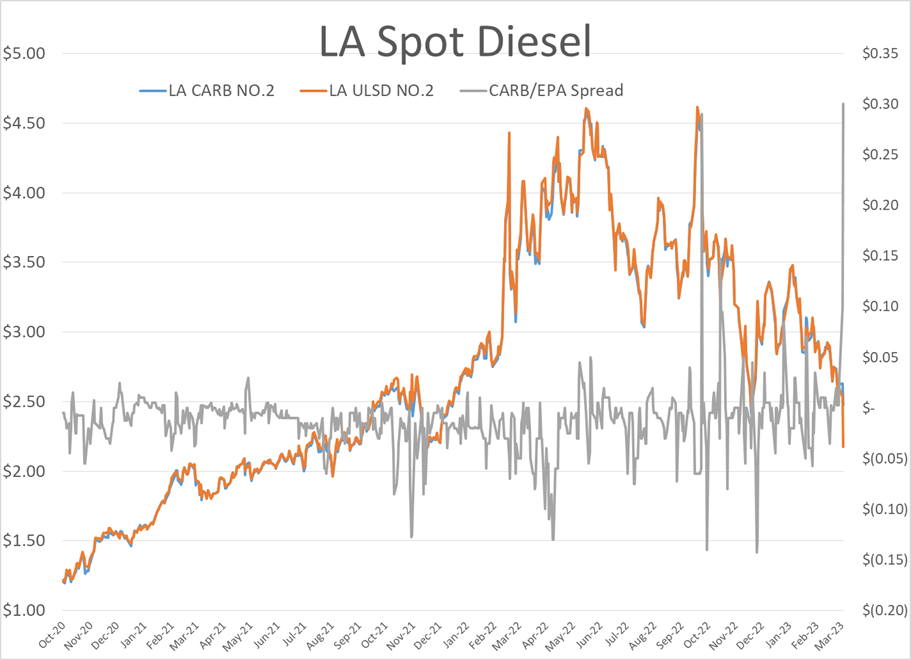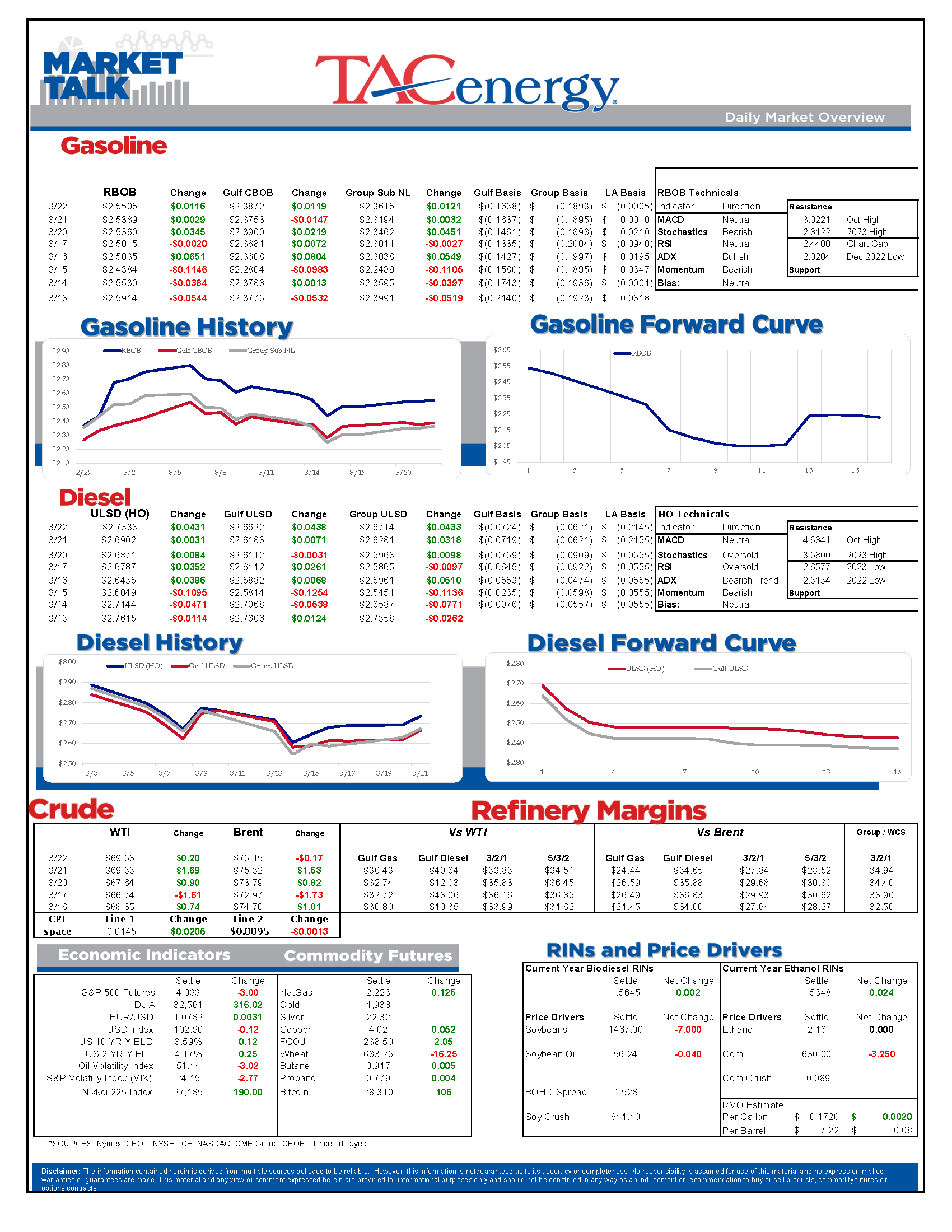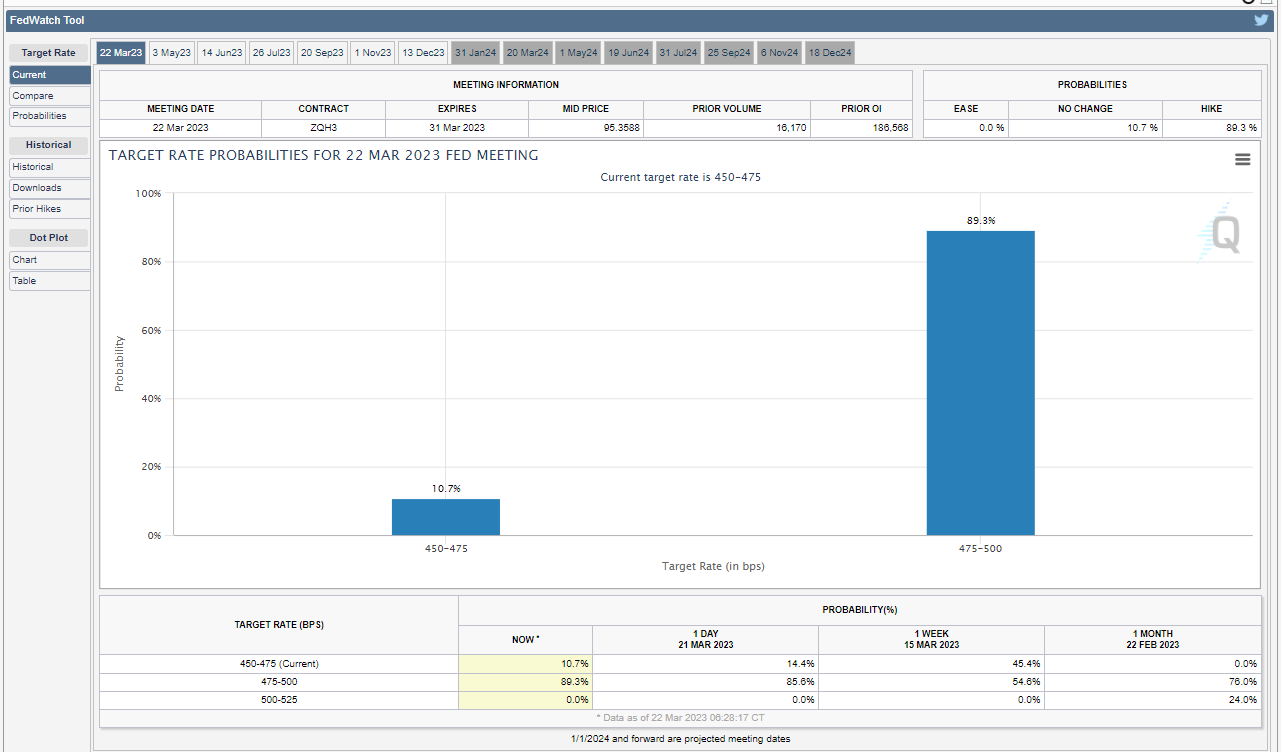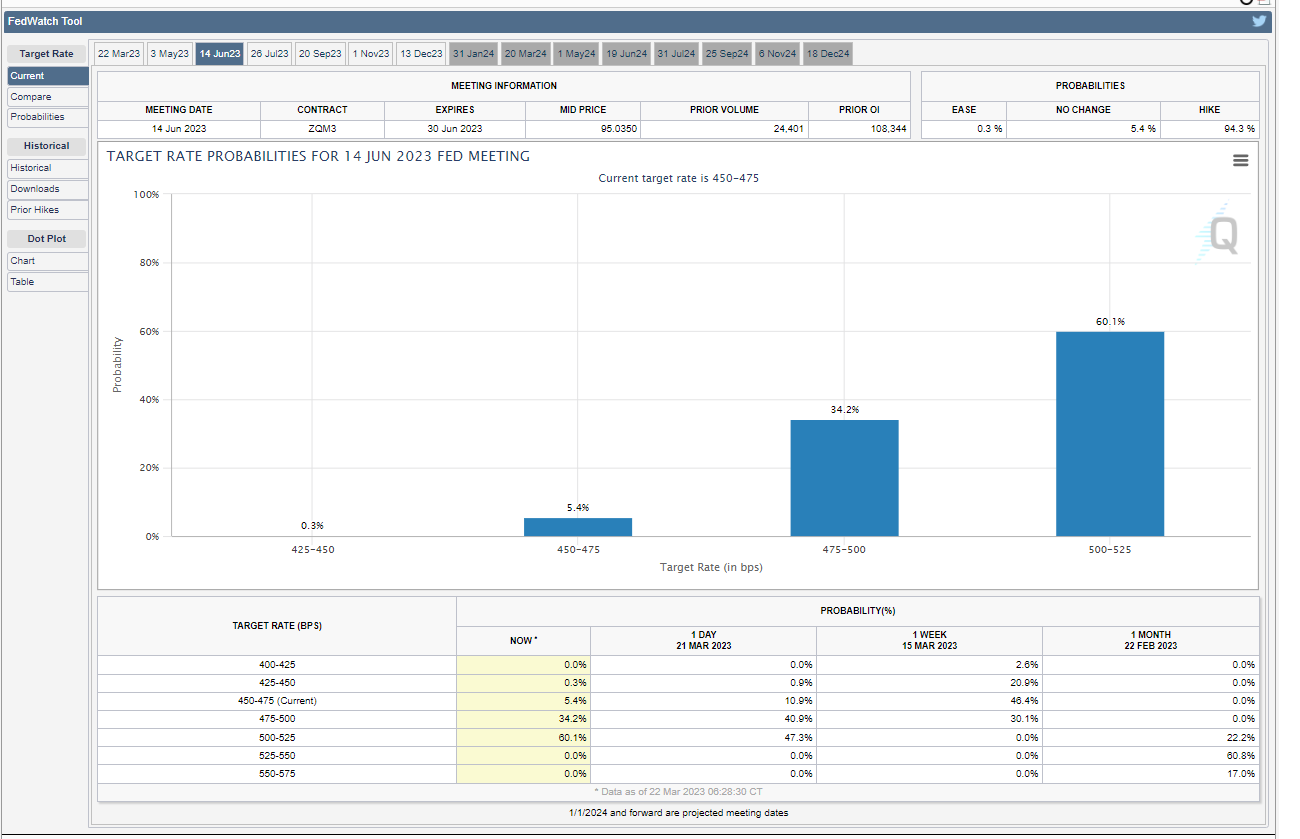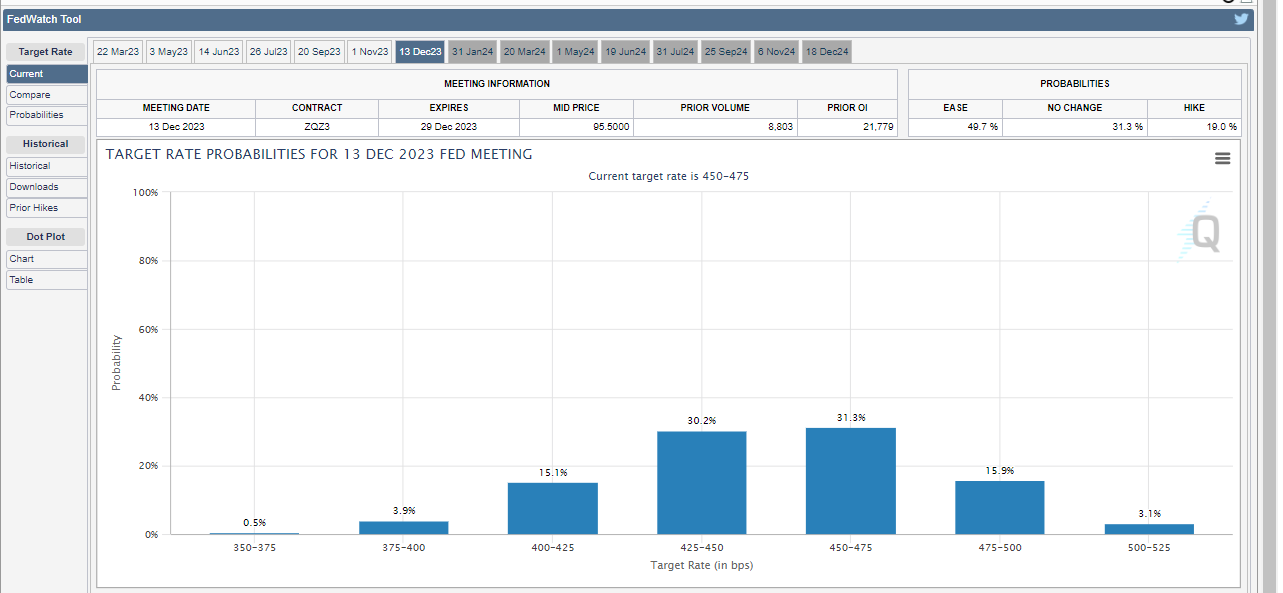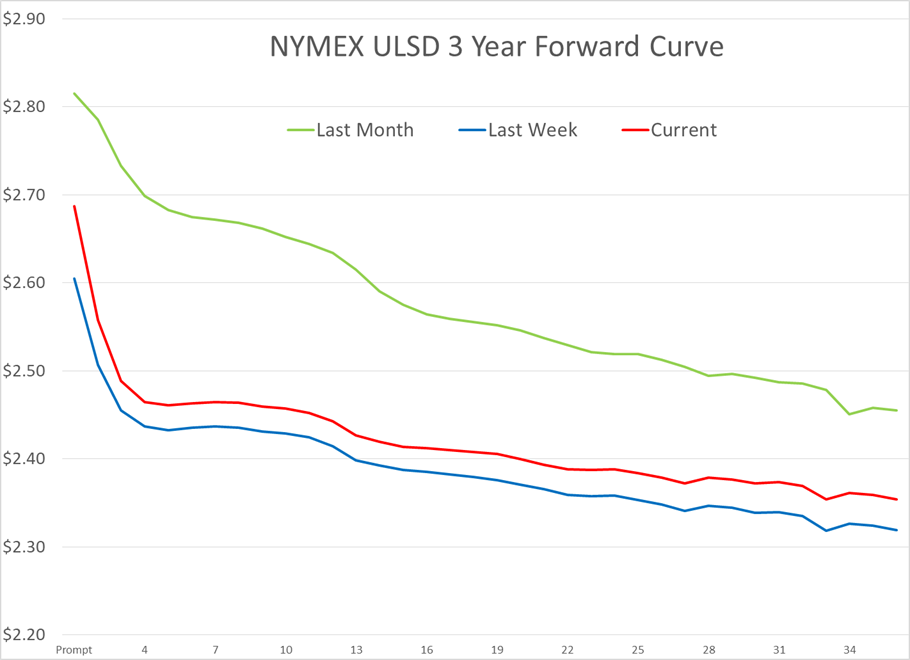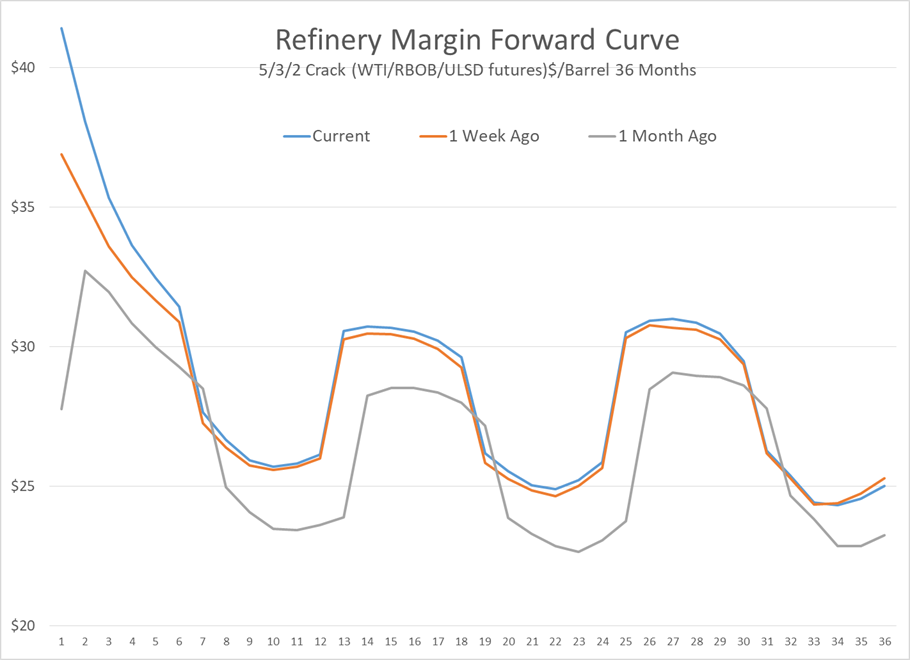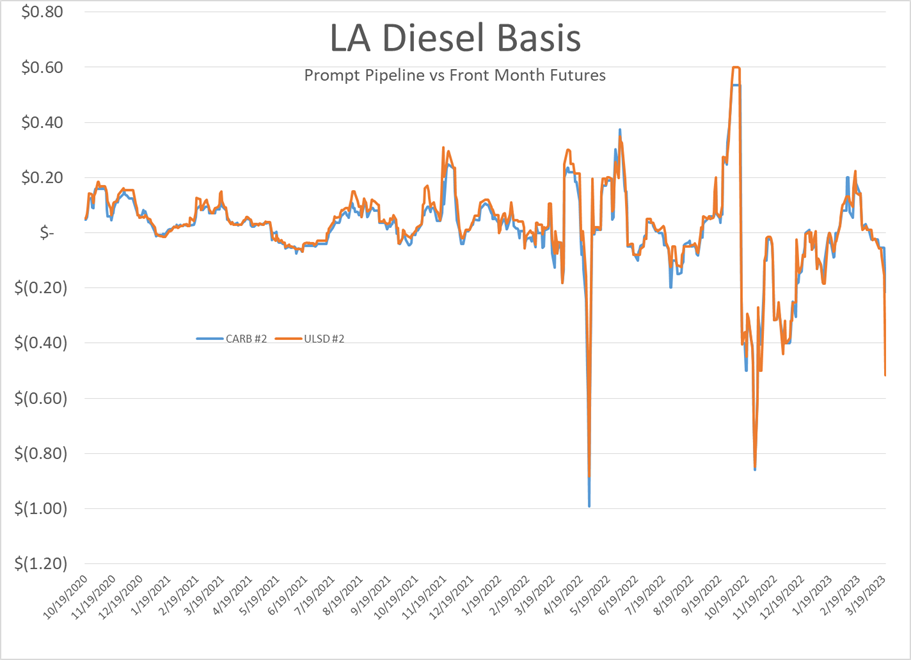Energy Futures Mixed Ahead Of DOE Report And Fed Announcement

Energy futures were calmly waiting on the FED’s 1pm announcement, like many markets around the world, with small and mixed results overnight. Diesel started to make a more meaningful rally attempt as we approach 8am central, moving higher for a 5th straight session, with stronger spreads signaling that refinery disruptions in Europe may finally be having some impact on prices now that most of the banking fears seem to have subsided.
The CME’s Fedwatch tool shows that expectations for a rate increase have risen in the past week, with just 10% betting the FED will hold rates steady today compared to 45% a week ago when the banking crisis was stirring all sorts of fears. It’s worth noting that there’s a 60% probability that the FED will raise rates by 50 points over the next 3 meetings, then 50% odds that rates will end up lower than they are now by the end of the year.
The API estimated gasoline stocks dropped by 1 million barrels last week, while diesel declined by 1.8 million. Crude oil inventories increased by 3.2 million barrels on the week as production held steady near 12.2 million barrels/day. The EIA’s weekly report is due out at its normal time this morning. The agency is still struggling to get a consistent and accurate tally on crude oil inventories due to the growing impact of condensate production on both inventory and export readings. We should also see the largest increase in refinery capacity reported today after Exxon officially brought its new 250mb/day units online at Beaumont TX last week.
France is attempting to requisition refinery workers to get them back on the job and get energy supplies flowing again. After 2 weeks of strikes, the impacts on diesel and crude prices are starting to appear, albeit in much less dramatic fashion than we saw last fall. Both time spreads and crack spreads for diesel have been marching higher over the past week but remain just a fraction of what we saw last year.
The last day of March pipeline trading brought fireworks in the LA spot market Wednesday with a seller of EPA ULSD #2 trapped without any buyers and offering prices all the way down to a 50 cent/gallon discount to futures without a trade ever getting done. Meanwhile multiple bidders for CARB ULSD #2 appeared but no offers at the suddenly huge discounts appeared, leaving the market dislocated, and those making price assessments grasping for straws.
April cycles should bring more liquidity, and many traders will be returning to the office following the annual AFPM (RIP NPRA) conference, so we should get a better feel for reality today. That said, more big swings are possible however as pipeline space to bring barrels east from LA is maxed out and a scramble for CBG gasoline to supply Phoenix taking up much more capacity than normal due to refinery downtime in other markets may leave diesel stuck at its origin points and put downward pressure on spot prices for the next month or so. The good news for consumers on the West Coast is that wholesale diesel prices are now down more than $2/gallon from where they were 6 months ago, which should help alleviate some of the pain they were feeling last year when retail values surged north of $6.
Click here to download a PDF of today's TACenergy Market Talk.
News & Views
View All
Energy Futures Are Caught Up In Headline Tug-O-War This Morning
Energy futures are caught up in headline tug-o-war this morning with Canadian oil production concerns and a positive US GDP report trying to push prices higher while sinking Chinese demand worries and Gaza ceasefire hopes are applying downward pressure. The latter two seem to be favored more so far this morning with WTI and Brent crude oil futures down ~45 cents per barrel, while gasoline and diesel prices are down about half a cent and two cents, respectively.
No news is good news? Chicago gasoline prices dropped nearly 30 cents yesterday, despite there not being any update on Exxon’s Joliet refinery after further damage was discovered Wednesday. Its tough to say if traders have realized the supply situation isn’t as bad as originally thought or if this historically volatile market is just being itself (aka ‘Chicago being Chicago’).
The rain isn’t letting up along the Texas Gulf Coast today and is forecasted to carry on through the weekend. While much of the greater Houston area is under flood watch, only two refineries are within the (more serious) flood warning area: Marathon’s Galveston Bay and Valero’s Texas City refineries. However, notification that more work is needed at Phillip’s 66 Borger refinery (up in the panhandle) is the only filing we’ve seen come through the TECQ, so far.
Premiums over the tariff on Colonial’s Line 1 (aka linespace value) returned to zero yesterday, and actually traded in the negatives, after its extended run of positive values atypical of this time of year. Line 1’s counterpart, Line 2, which carries distillates from Houston to Greensboro NC, has traded at a discount so far this year, due to the healthy, if not over-, supply of diesel along the eastern seaboard.
Click here to download a PDF of today's TACenergy Market Talk.

WTI And Brent Crude Oil Futures Are Trading ~$1.50 Per Barrel Lower In Pre-Market Trading
The across-the-board drawdown in national energy stockpiles, as reported by the Department of Energy yesterday, stoked bullish sentiment Wednesday and prompt month gasoline, diesel, and crude oil futures published gains on the day. Those gains are being given back this morning.
The surprise rate cut by the People’s Bank of China is being blamed for the selling we are seeing in energy markets this morning. While the interest rate drop in both short- and medium-term loans won’t likely affect energy prices outright, the concern lies in the overall economic health of the world’s second largest economy and crude oil consumer. Prompt month WTI and Brent crude oil futures are trading ~$1.50 per barrel lower in pre-market trading, gasoline and diesel are following suit, shaving off .0400-.0450 per gallon.
Chicagoland RBOB has maintained its 60-cent premium over New York prices through this morning and shows no sign of coming down any time soon. Quite the opposite in fact: the storm damage, which knocked Exxon Mobil’s Joliet refinery offline on 7/15, seems to be more extensive than initially thought, potentially extending the repair time and pushing back the expected return date.
There are three main refineries that feed the Chicago market, the impact from one of them shutting down abruptly can be seen in the charts derived from aforementioned data published by the DOE. Refinery throughput in PADD 2 dropped 183,000 barrels per day, driving gasoline stockpiles in the area down to a new 5-year seasonal low.
While it seems all is quiet on the Atlantic front (for now), America’s Refineryland is forecasted to receive non-stop rain and thunderstorms for the next four days. While it may not be as dramatic as a hurricane, flooding and power outages can shut down refineries, and cities for that matter, all the same, as we learned from Beryl.

